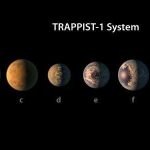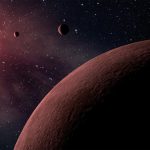New ideas on what makes a planet habitable could reshape the search for life0
- From Around the Web, Space
- September 8, 2021
Some planets in the habitable zone are not good for life, but others outside it might be

Some planets in the habitable zone are not good for life, but others outside it might be

Our solar system is home to some unusual places we could potentially migrate to if Earth were to die.

There are at least 300 million habitable planets in the Milky Way, new NASA research has shown – hinting that it’s less likely that humanity is alone in the universe.

Three teams of astronomers have been fascinated by an alien world known as K2-18b. But what’s all the fuss about?

K2-18b is thought to host conditions that are suitable for life sustenance.

Intense radiation could strip away the ozone layer of Earth-like planets around other stars and render them uninhabitable, according to a new study.

An international team of astronomers has used the NASA/ESA Hubble Space Telescope to look for atmospheres around four Earth-sized planets orbiting within or near TRAPPIST-1’s habitable zone. The new results further support the terrestrial and potentially habitable nature of three of the studied planets. The results are published in Nature Astronomy.

Two exoplanets in the TRAPPIST-1 system have been identified as most likely to be habitable, a paper by PSI Senior Scientist Amy Barr says.

It has recently been announced (never very loudly) that NASA’S Kepler spacecraft has found at least more than 100 confirmed alien planets – and probably far more than they actually make out to have discovered!

But our days of massive exoplanet dumps may be numbered.



